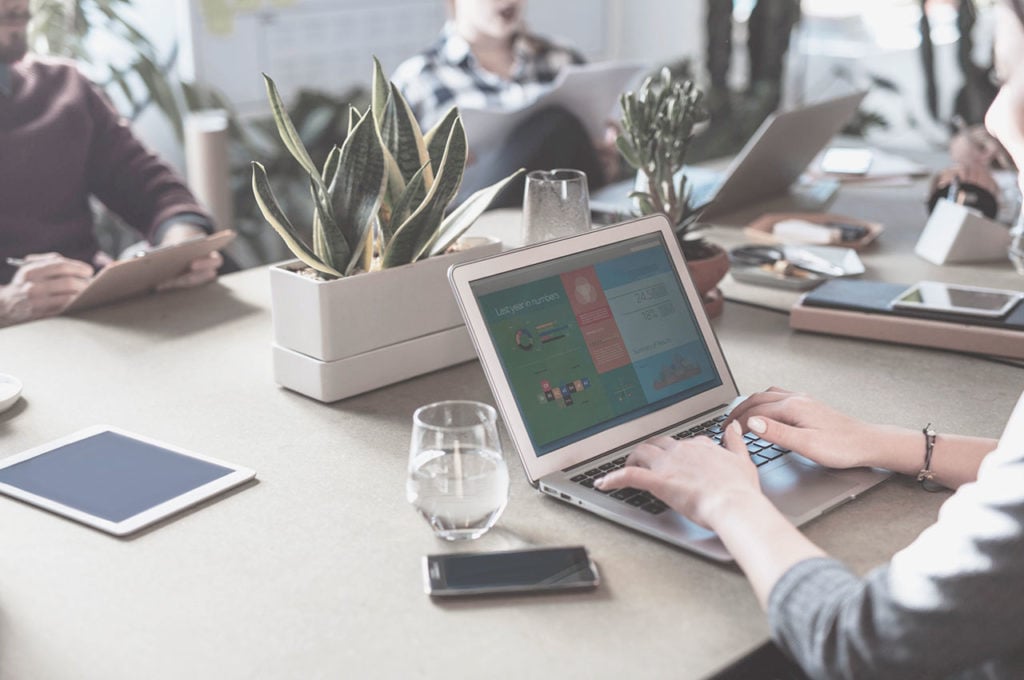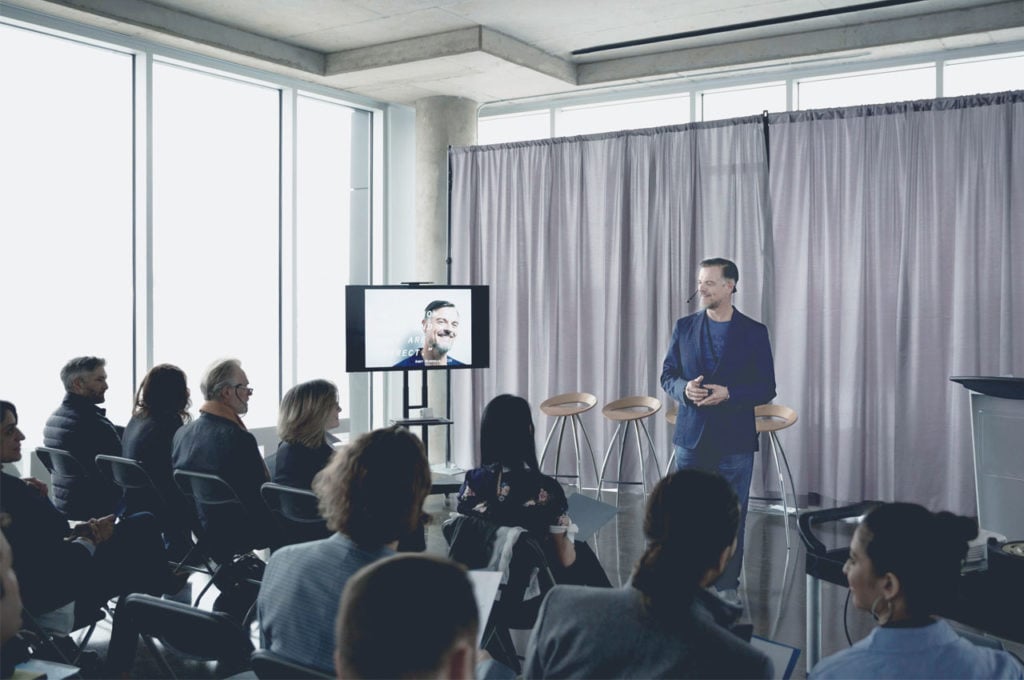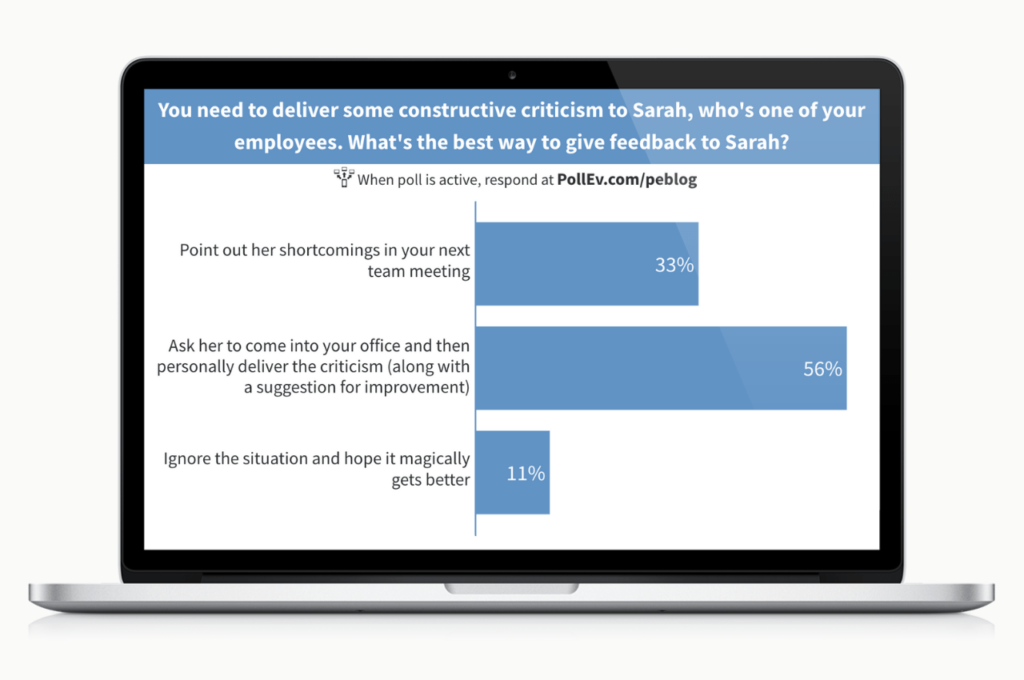11 holistic conference ideas for before, during, and after your presentation

You need to deliver a conference presentation, and you want to be as effective as possible. Of course, you know that preparation is key, but you still assume that your impact really occurs during that time period when you’re up on that stage leading your session.
Yes, what happens during your presentation is undoubtedly important.
However, those who lead the most impressive conference sessions take a more holistic approach. They recognize that it’s not just what happens during — but also before and after — their presentations that engages their audience.
So what do you need to know to be more holistic with your own presentation and wow your audience members at all stages of the process? We’re sharing 11 different conference ideas to knock your next conference session out of the park — even before (and long after) you step on that stage.
Before your presentation…

1. Poll your audience
The best presentations are highly tailored to the audience, but that’s tough to do if you don’t actually know anything about who you’re speaking to.
This is why it’s helpful to poll them beforehand to better understand their level of familiarity with your topic. You can either use a simple poll at the very beginning of your presentation, or you can send out a poll link before the start of your session (so you have time to process that information and make any necessary adjustments).
Knowing where your audience is starting in terms of knowledge means you can tweak your anecdotes and even the overall complexity of your presentation to meet them where they are.
2. Sell the benefits
Oftentimes pre-promotion of conference sessions is painfully vague — there’s nothing more than a short blurb that says, “Susan Smith will discuss recruiting and retaining millennial employees.”
It’s more helpful to attendees if they can have a more detailed description of what you’ll talk about (and, most importantly, why that matters to them). Collaborate with the event host to tailor the messaging about your session, and make sure to focus any of your own pre-promotion efforts on the benefits of your presentation. What value will your attendees walk away with?
For example, instead of the general description above, you might revise it to say,
“Susan Smith will discuss today’s challenges in recruiting and retaining millennial employees, as well as how you can overcome them to maintain a happy, productive, and diverse workforce.”
Emphasize those beneficial takeaways in your promotional materials, and you’re sure to fill more seats.
3. Monitor relevant hashtags
Since all of us are constantly connected to our smartphones, most events use a customized event hashtag. It’s wise to monitor the conversations that are happening with that hashtag prior to your presentation.
Doing so means that you can keep on top of what’s trending or being discussed by event attendees, so that you can interact, and even incorporate some of those tidbits into your own presentation.
Beyond the event-specific hashtag, you should also keep a close eye on hashtags that are relevant to your industry or presentation topic. That will equip you with some up-to-date happenings that you can use to make your content even more relevant and timely for your attendees.
During your presentation…

4. Use a Q&A activity
You want to keep your presentation focused and minimize distractions. But you also don’t want audience members to smile, nod, and hide their confusion throughout your talk — just because they’re saving their questions for the end when they can line up at the microphone.
Using a Q&A activity, you can collect questions and feedback throughout your presentation without being interrupted or thrown off track.
This means that your attendees can be more engaged and involved in your presentation and share ideas or questions while they’re fresh in their brain.
Plus, this real-time feedback allows you to address those questions, clear up confusion, and make any necessary adjustments to your presentation immediately so that your audience members get the most value.
5. Include audience polls and live quizzes
It doesn’t matter if you’re the most engaging presenter on the planet — it’s still difficult for your audience members to sit still and listen for an extended period of time.
This speaks to the importance of involving them in the process. Aside from a Q&A activity, you can also include audience polls and live quizzes to make your topic far more interactive.
For example, ask your audience a question and have them submit their answers via Poll Everywhere. Doing so can instill a little friendly competition or give you and your audience some valuable, real-time data to back up a point that you’re making.
6. Involve people in demonstrations or conversations
It can also be helpful to get your audience members up out of their seats and moving around (ahem, particularly if you have an after-lunch presentation slot).
You can bring up attendees to participate in a demonstration or visualization of an important point. Or, you can split them into smaller groups for discussions or activities.
These types of tasks get your audience members’ blood pumping, breaks up the long period of only you speaking, and makes your entire session far more engaging.
7. Let the audience decide what’s next
Do you remember those “choose your own adventure” style books from your childhood — when you controlled the story by selecting an option and then navigating to a specific page?
Your presentation doesn’t need to be linear, and you can keep things interesting by implementing a similar approach in your own presentation.
For example, imagine that you’re presenting on leadership. You could set up a scenario for your audience, such as:

Using Poll Everywhere’s decision modeling, you could navigate to different slides for each of those answers that explains the results of each of those actions.
This is a great way to give your audience a little bit of control over your presentation, while also ensuring that you’re covering topics thoroughly — because you have to explore multiple scenarios and perspectives.
Looking for even more ways to make your presentation more interactive? There’s tons of inspiration right here.
After your presentation…

8. Stay after your session
Your talk is done. The hard part is over. You’re ready to hightail it out of that conference room and take a deep breath.
Not so fast. One of the best ways to impress and engage with your attendees is to stay after your session to shake some hands, answer questions, and foster a more personal connection with the people who sat through your talk. It’s a seemingly small gesture that can make all of the difference in the minds of your audience members.
9. Distribute share materials
Even if your audience members were diligent notetakers, chances are you touched on some resources that they might want to get their hands on following your presentation.
Follow up with a friendly email to thank them for their participation, and also share materials like:
- Poll results
- Notes
- Graphics
- Slides
- Links to additional resources
Additionally, it’s also smart to end your presentation with a final poll that asks for suggestions, recommendations, or even a key takeaway from your talk or the conference in general. Those are also valuable nuggets to share in your follow-up email.
10. Offer something special
People love feeling like they’re getting exclusive access to something. So why not give your attendees something special when you send that after-event email?
Maybe it’s a discount code for your products or services. Or maybe it’s free access to a helpful resource (like an ebook or a webinar you created).
Think of something you can offer. Rest assured that it doesn’t need to be anything large or costly — even the smallest gestures can make an impact with your audience.
11. Actively solicit feedback
Finally, your post-event message is also a great time to gather valuable feedback about how you can improve moving forward.
You can include a link to a brief survey or comment form that people can fill out. Or, you can keep things simple and ask that they respond directly to your email with any thoughts or suggestions.
This type of feedback isn’t always easy to hear, but it will reinforce the fact that you value your audience, and also help you become an even more effective presenter moving forward.
Use these conference ideas to wow attendees
What happens during your conference session is important, but you need to take a holistic approach and recognize that what you do before and after matters too (arguably even more). Put these strategies to work, and you’ll put together a conference session that keeps things interesting, delivers undeniable value, and ultimately impresses all of your attendees — long after your presentation is over.